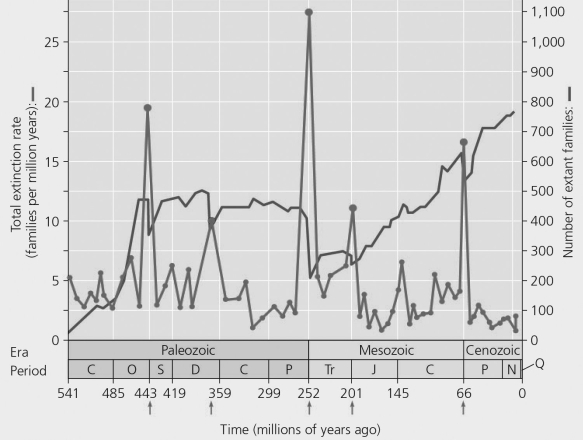Multiple Choice
 Figure 23.3
Figure 23.3
- Figure 23.5
Figure 23.5
Which period had the greatest rate of extinction?
A) Permian
B) Cretaceous
C) Devonian
D) Cambrian
Correct Answer:

Verified
Correct Answer:
Verified
Related Questions
Q2: The major evolutionary episode corresponding most closely
Q13: Radiometric dating is based on the<br>A)decay of
Q14: An organism has a relatively large number
Q21: Pax-6 usually causes the production of a
Q30: Hox genes are a group of related
Q33: A change in the nucleotide sequence of
Q39: If the half-life of carbon-14 is about
Q42: Many species of snakes lay eggs.However,in the
Q57: <img src="https://d2lvgg3v3hfg70.cloudfront.net/TB7910/.jpg" alt=" Figure 23.3 -According
Q60: The following questions refer to this hypothetical